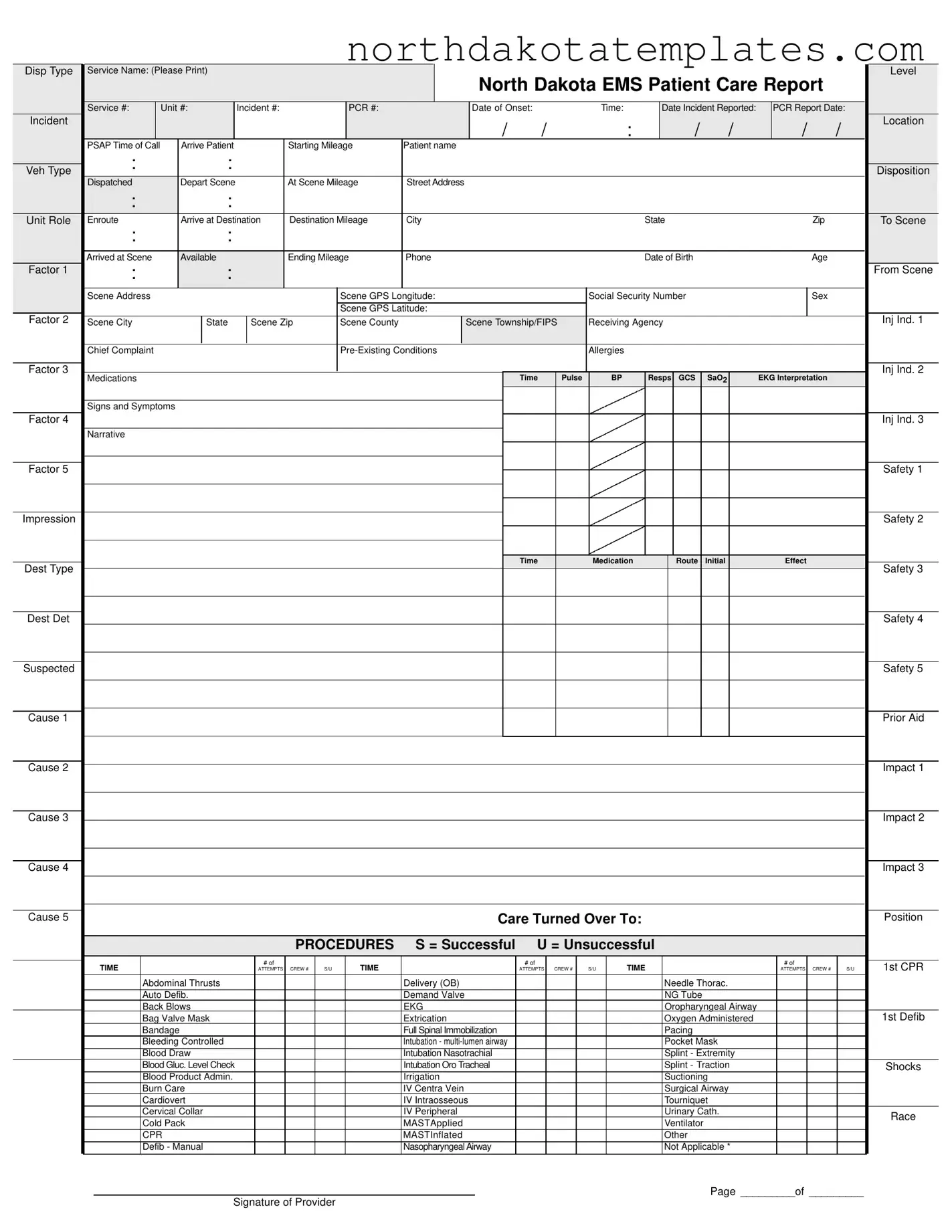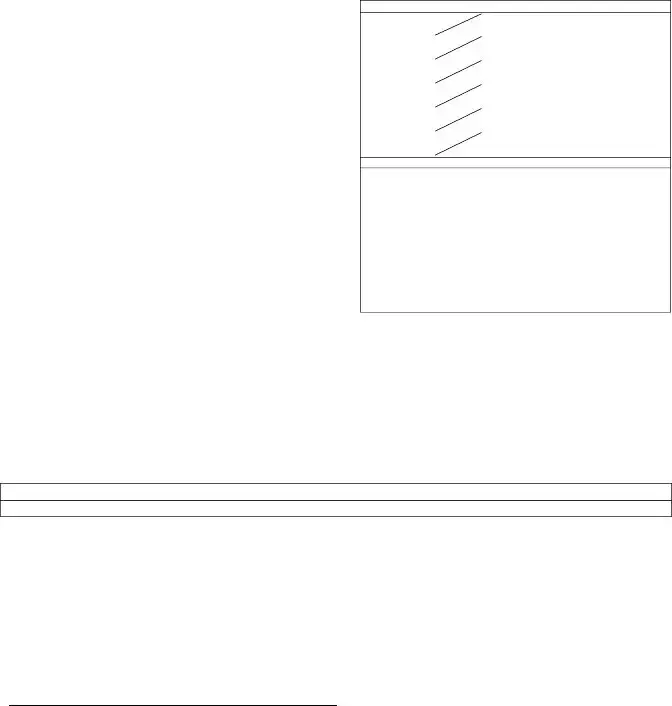Filling out the North Dakota EMS Patient Care Report form accurately is crucial for effective patient care and documentation. However, there are common mistakes that individuals often make during this process. Recognizing these pitfalls can help ensure that the report is completed correctly.
One frequent error is neglecting to provide complete patient information. Essential details such as the patient's name, date of birth, and social security number must be filled out accurately. Omitting this information can lead to difficulties in patient identification and billing issues later on.
Another common mistake involves inaccurate recording of the incident details. This includes the date and time of the incident, as well as the location. If these details are incorrect, it may complicate the response and follow-up care for the patient. Always double-check these entries for accuracy.
Many people also fail to document the chief complaint and pre-existing conditions properly. These elements are vital for understanding the patient's medical history and the context of the emergency. Incomplete information in this section can hinder the medical team's ability to provide appropriate care.
Additionally, errors often occur in the section detailing the medications administered. It is essential to record the correct medications, dosages, and routes of administration. Miscommunication in this area can lead to dangerous outcomes for the patient.
Another mistake is related to the procedures performed. Individuals may forget to indicate whether a procedure was successful or unsuccessful. This information is critical for future medical evaluations and can affect ongoing treatment plans.
Some people mistakenly leave out the billing information or do not provide complete insurance details. This can result in delays in payment and potential financial complications for the patient. It is important to ensure that all insurance information is accurately recorded.
Moreover, individuals often overlook the signature section. Both the patient and the provider must sign the report to validate the information and authorize treatment. Missing signatures can render the report incomplete and may lead to legal issues.
Lastly, failing to include detailed narratives of the incident and care provided is a common oversight. A thorough narrative helps to create a complete picture of the event and the actions taken, which is vital for both legal and medical reasons.
By being aware of these common mistakes, individuals can ensure that the North Dakota EMS Patient Care Report form is filled out correctly, leading to better patient care and documentation practices.


